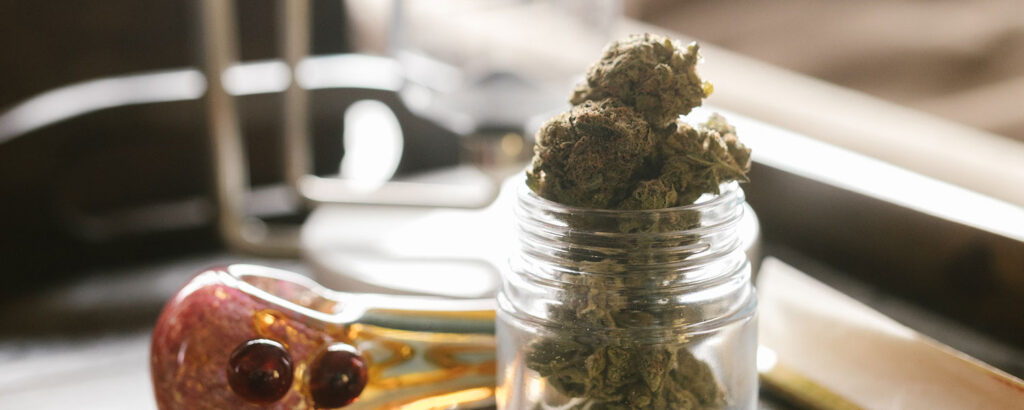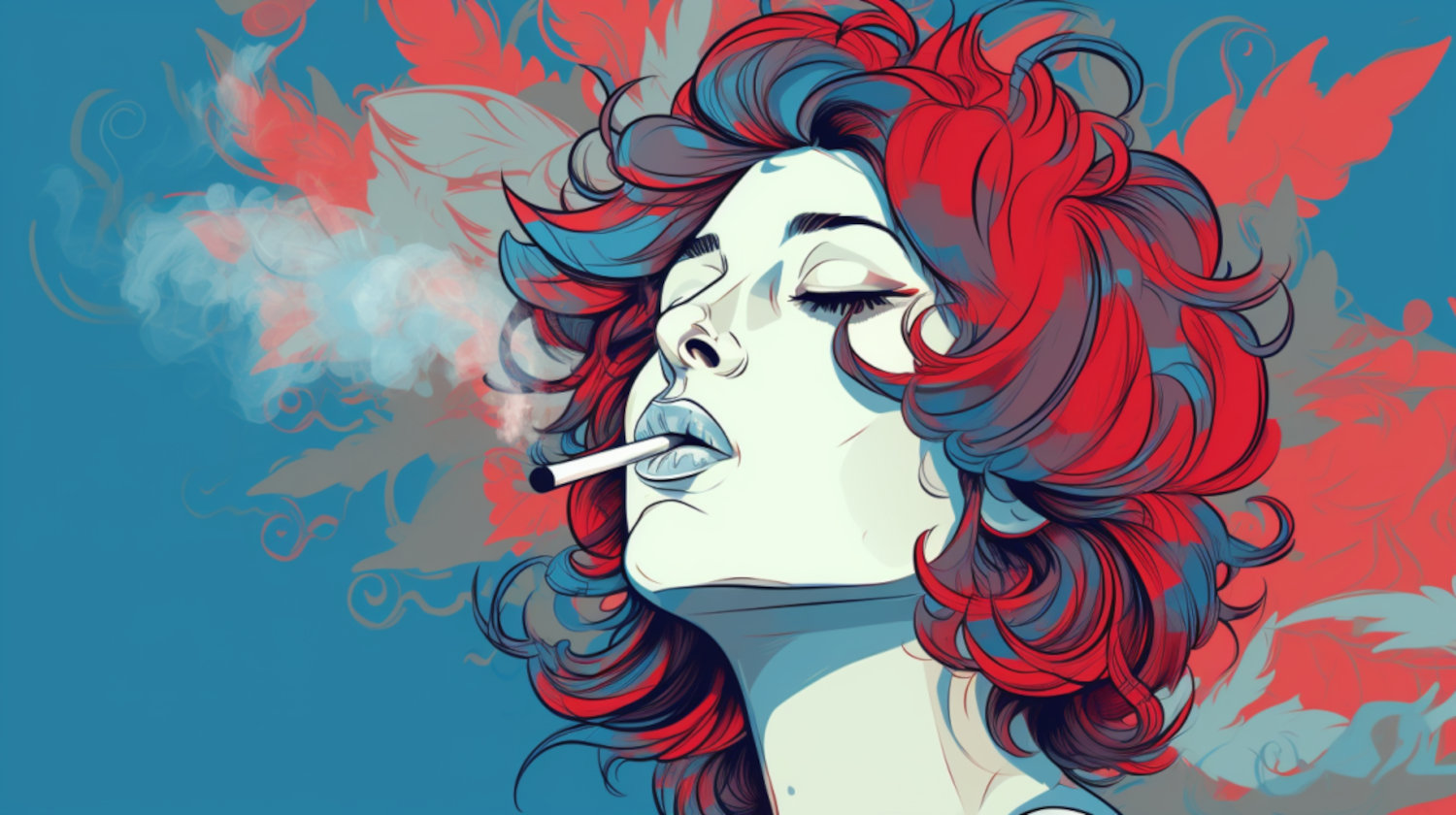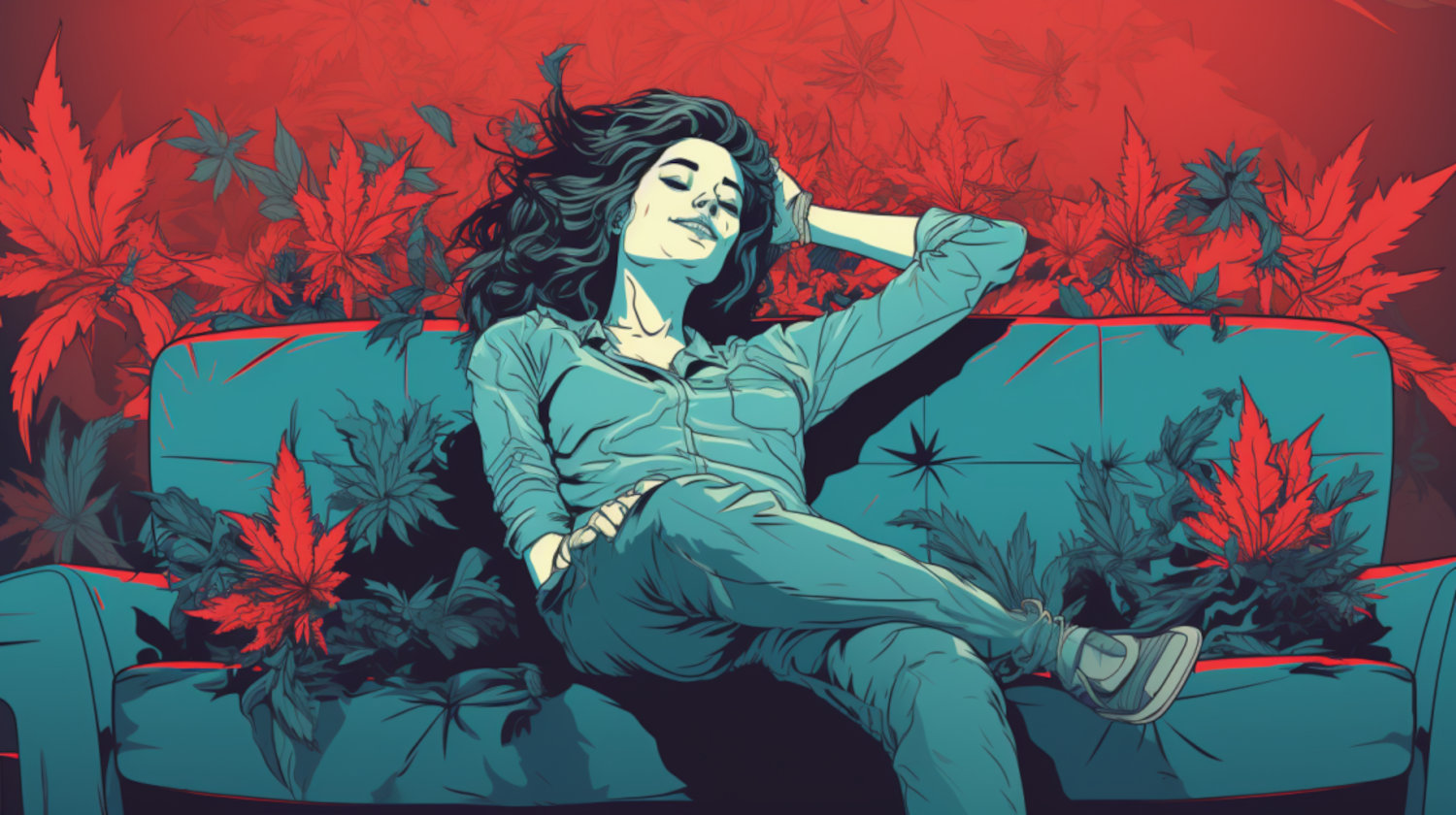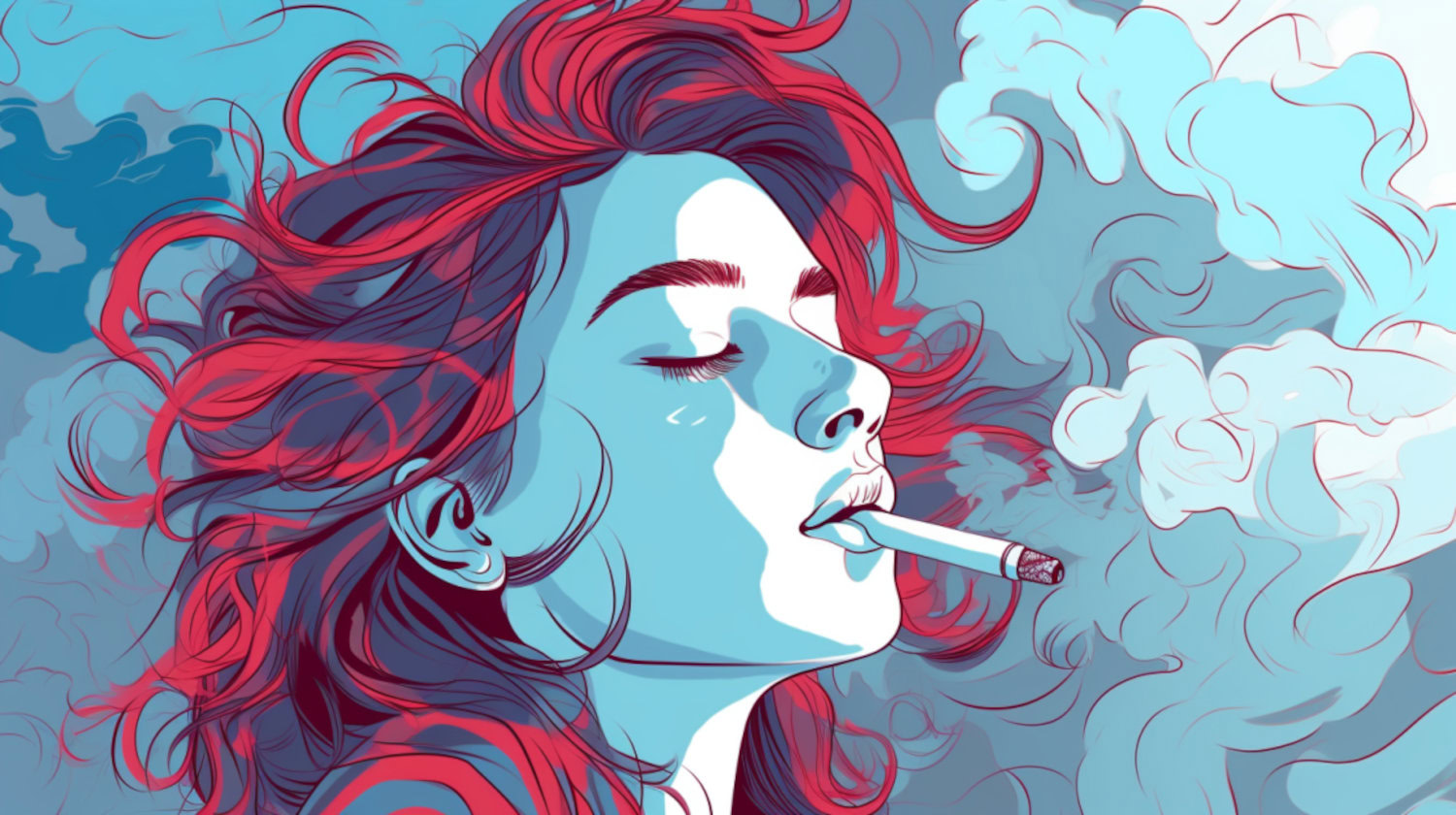In This Article
- What is Cannabis Smoking?
- Joints, Blunts, Spliffs
- Pipe Smoking
- Dabs
- What Effects Should I Expect When Smoking Weed for the First Time?
- How to Properly Smoke Weed
- Weed Smoking Compared to Other Methods
- First Time Weed Smoking FAQ
- Tips to Get the Most Out of Your First Cannabis Experience
- Before Smoking Weed
- After Smoking Weed
- Conclusion
Smoking weed for the first time can be daunting and overwhelming. Many first-time weed smokers have questions about how to smoke, what the effects will feel like, and how they can have the best possible experience.
If you're a new cannabis consumer, keep scrolling as we discuss the essentials for smoking weed for the first time, how the plant affects us, and all the various ways it can be enjoyed.
What is Cannabis Smoking?
The age-old tradition of smoking cannabis shows no signs of letting up, even as consumers are presented with various consumption options to enjoy. While vaping and edibles bring a range of unique perks, smoking is particularly special to so many cannabis consumers.
A world of smoke options awaits you.
But before we get into the nitty-gritty, let's talk about macro preparation. To get started with most smoked options, you'll need a few essentials:
- Dry flower or extracted cannabis oil
- Lighter (Bic or butane, depending on what you're smoking)
- Your preferred smoking device
These essential tools are enough to get you started. And depending on your preferred smoking option, you'll want to add a few more basic resources.
Joints, Blunts, Spliffs
The triumvirate of tree smoking. The three pillars of pot smoking. Larry, Curly, and Dro. Whatever you want to call them, these three options are cannabis smoking classics. Mimicking cigarette-style smoking, each carries its own twist. Pre-rolls have joined the mix, saving consumers time and cleaning up by doing all the work for them.
In any case, be ready to have these on hand:
Joint
- Dry flower
- Rolling papers
- Lighter
- Cardboard crutch (Optional)
- Grinder (Optional)
Blunt
- Dry flower
- Cigar or cigar wrap
- Lighter
- Exacto-knife or similar type blade
- Grinder (Optional)
Spliff
- Dry flower
- Tobacco (this is what makes it a spliff)
- Rolling papers
- Lighter
- Grinder (Optional)
Pre-Roll
- Your preferred pre-roll (can be purchased at almost any dispensary)
- Lighter
You may also want to have an ashtray on hand.
Pipe Smoking
Traditionally made from glass, cannabis pipes can now be found in a wide range of materials, from wood to crystal to silicone. While some options, like bongs, require water to be used properly, bowls and chillum pipes do not. To get smoking from a pipe (or bong), you'll want to have the following:
- Dry flower
- Your preferred pipe
- Water (If using a water pipe or bong)
- Lighter
- Grinder (Optional)
Dabs
Dabs are an attractive newer option best reserved for more experienced consumers, thanks to the often hard-hitting effects. Other than discreet handheld pieces, most dab rigs look like bongs, except they use a heated “nail” instead of a bowl.
To dab, you'll need the following:
- Concentrated cannabis oil ("Extracts")
- Your preferred rig (Classic glass piece or a handheld device)
- Torch (If using a traditional rig)
- Dabber tool/Dab spoon
What Effects Should I Expect When Smoking Weed for the First Time?
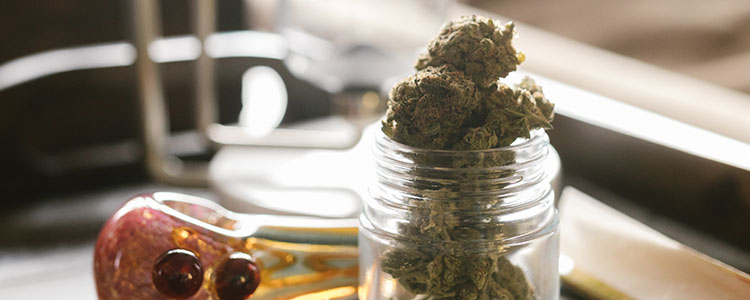
Tetrahydrocannabinol (THC) and hundreds of other plant compounds affect our bodies, namely the endocannabinoid systems (ECS) when consumed.
The ECS regulates vital functions like immune response, appetite, and cell communication. Naturally produced cannabinoids in our bodies, or endogenous cannabinoids, attach to the CB1 and CB2 receptors and send signals to the body. When THC is introduced, it will also bind to the receptors, sending signals that aren't as clear, creating the famous "high" feeling.
But that doesn’t mean everyone experiences the same effects after consuming cannabis for the first time. Experiences and outcomes vary from person to person, and they are affected by the strain consumed, the amount of THC in the product, a person’s metabolism, how much they ate or drank, and a wide array of other internal and external aspects.
While everyone has a different experience with cannabis, the most reported effects include:
- Altered time perception
- Anxiety or paranoia
- Dry mouth
- Happiness
- Improved sleep
- Increased appetite (aka "the munchies")
- Increased heart rate or blood pressure
- Red or itchy eyes
- Reduced focus
- Reduced hand-eye coordination
- Relaxation (aka "couch lock")
- Uplifted or euphoric feelings
Most smoked or vaped cannabis effects set in within seconds to minutes of inhaling. The results usually last for two to four hours, with the peak coming around hour two or three.
Those experiencing adverse or overwhelming effects may want to consider consuming CBD. Rather than binding to CB1 and CB2 receptors, CBD can dampen the receptor's ability to respond. In doing so, an offsetting effect can occur where THC symptoms lessen. Using CBD as a way to mitigate the intoxicating effects of THC may work best with faster onset options, like a dry flower, vapes, oils, and tinctures.
How to Properly Smoke Weed
Regardless of how you choose to smoke cannabis for the first time, there are a few guidelines and tips smokers should follow to get the best of their experience.
- Strain Choice: Knowing what strain and plant compound profile it contains should help you plan for its effects. Look for the dominant cannabinoids and terpenes to prepare for what's to come. Feel free to ask your Budtender if you're unsure.
- Setting Is Key: You can smoke just about anywhere legally permitted. But that doesn't mean all smoke spots are created equal. Find a setting that puts you at ease and makes you happy.
- Properly Store Your Cannabis: Not ready to smoke your newly bought bud? Be sure to properly store it in the meantime to keep it fresh and avoid drying out or diminishing the quality of your purchase. Almost all pot products enjoy cool, dark places for storage. UV light-protected glasses are an excellent way to stave off degradation as well.
- How To Avoid Coughing: There’s no shame in coughing when you smoke. Enough smoke in the lungs can create a long, agitating coughing experience. It’s possible to avoid cannabis cough by taking in softer, shorter hits than you might otherwise think you should. Pull softly, then let the smoke rest in your mouth for a moment to cool down before pulling into the lungs.
- Avoid Canoeing: Canoeing is when one side of a joint burns while the other doesn't, creating an uneven burn. Light your joint with the flame at the tip to avoid this outcome. Slowly rotate the piece in the fire for an even burn. Do not inhale until after the end of the joint or preroll is burning.
Weed Smoking Compared to Other Methods
Results vary, but common pros and cons for each consumption method include:
| METHOD | PROS | CONS |
| Smoking | Rapid onset time, traditional consumption experience | Smoke inhalation may lead to lung and throat irritation |
| Vaping | Rapid onset time without consuming smoke | The effects of vaping continue to be studied, with the EVALI lung crisis highlighting the dangers of black market vaporizers. |
| Edibles | Often stronger effects, discreet, no smoking or vaping involved | Slower onset time (up to 2 hours), some consumers report not feeling effects |
| Tinctures | Rapid onset time for sublingual tinctures, discreet, no smoking or vaping involved | Slower onset time (up to 2 hours) if consumed like an edible |
| Topicals | Fast-acting, skin-deep solution, typically non-intoxicating | Many topicals do not reach the bloodstream and won’t produce intoxicating effects |
First Time Weed Smoking FAQ
What’s the difference between indica and sativa?
Indica and sativa were initially used to describe the shape and structure of cannabis buds, not their effects. But traditional definitions remain: for many consumers, sativa is known for producing uplifting effects, and indica creates sedative, couch-lock-type effects. However, this isn’t always accurate, as most strains are hybrids due to cross-breeding. Rather than focus on indica or sativa, you likely will better benefit from understanding a strain's terpene and cannabinoid profile, which help define the type of effects you can expect.
What strains are ideal for newbies?
Beyond starting with a lower dose strain to avoid over-intoxication, the choice boils down to the outcome you want to have. There is no one-size-fits-all answer here. Look up strain reviews for the desired effects, and stick with lower THC concentration strains initially: while many commercial strains come in at over 25-30% THC, first-time weed smokers may wish to stick to 20% THC or lower for their first foray.
How long does it take to get high?
Onset times vary from a few moments when smoking to up to two hours when enjoying edibles. It depends on your chosen consumption method.
When is smoking not recommended as a form of consumption?
Typically, smoking is recommended when you want a fast-acting effect from your cannabis. However, if you are already coping with throat irritation, a cold, or another lung or throat condition, smoking could cause further irritation. Likewise, smoking is not recommended if it is prohibited in your location (by a landlord, employer, etc.).
What should I avoid after smoking weed?
In most cases, you shouldn't be working or operating machinery after consuming (and absolutely no driving after smoking cannabis!). Some consumers say that cannabis helps them as parents, but stigma around the plant remains, and not all states offer parental protections to medical cannabis patients. As such, it may be best to avoid that playdate if you just lit up.
Can you overdose on smoked marijuana?
There are no reported deaths from overconsuming cannabis. However, people may feel short-term ill effects if they ingest too much cannabis or too strong a dose.
Will I develop an addiction from cannabis?
Cannabis addiction can occur, though most studies suggest the likelihood of developing an addiction is minimal.
Will I get red eyes, and what can I do about them?
Red eyes are common in cannabis smoking due to widening blood vessels in the eye. You can't do much to avoid the outcome, but numerous over-the-counter eye drops can help relieve the dry or painful sensation and redness.
Tips to Get the Most Out of Your First Cannabis Experience
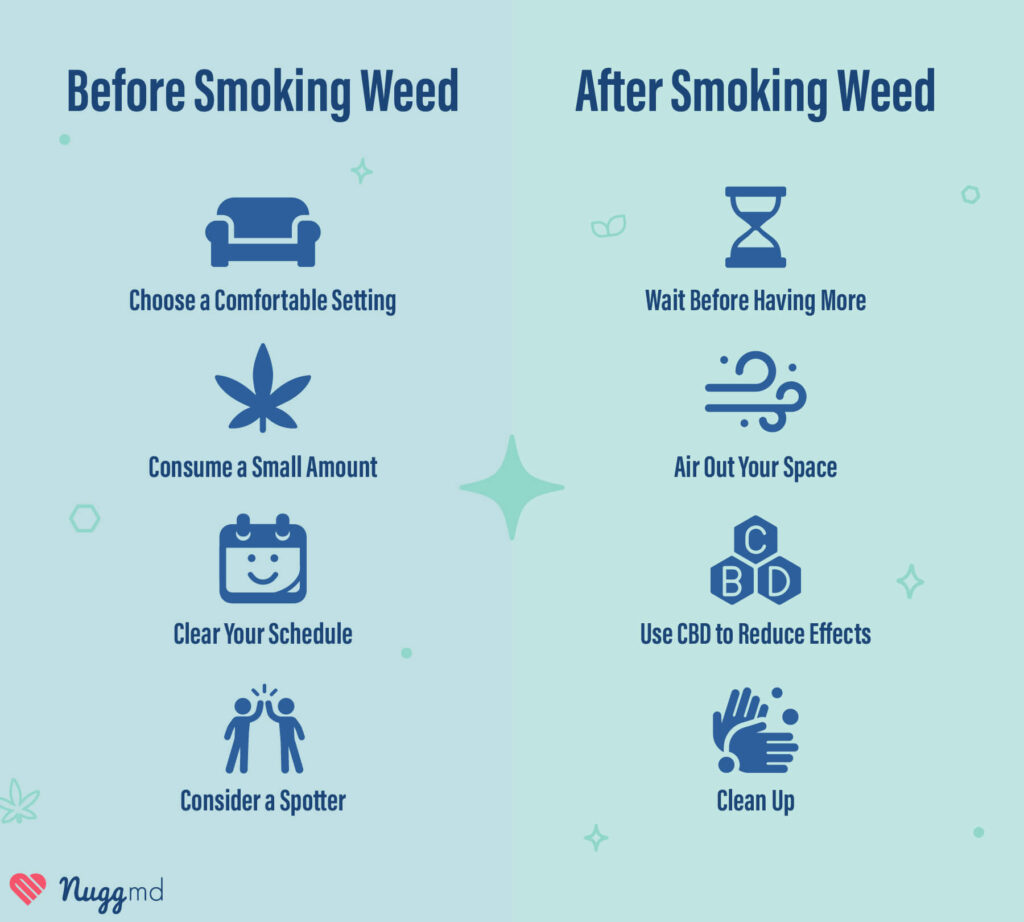
Before Smoking Weed
Before you light up for the first time, consider checking off the following boxes:
✔ Choose a comfortable setting: Remember, setting is key to comfort.
✔ Consume a small amount: The "start low, go slow method" is an excellent approach. Consume 5mg of THC or less, then wait 2 hours and see how you feel. Try another dose of the same amount if you'd like more. Feel free to increase the dosage the next time.
✔ Clear your schedule: Don't get high before work, school, or another important engagement.
✔ Consider a spotter: Spotters are your sober friends and/or the veteran pot smokers in your group. Consider having one or two trusted buddies on hand to monitor how you feel and help out if you start to feel anxious or unwell.
If you don't have a friend or family member who can sit with you, consider adding the Fireside Project app to your phone. The organization's Psychedelic Peer Support Line and compassionate, rigorously trained volunteers are available 11am to 11pm Pacific time to provide help to individuals during and after a psychedelic experience. And through their Equity Project, callers who are military veterans or who identify as BIPOC or transgender are able to connect with a support line volunteer who shares that aspect of their identity.
After Smoking Weed
After you've smoked, consider some of the following to keep your head feeling fine and your smoke spot tidy:
✔ Don't get higher: The urge to consume more may be strong. Hold off until you've built your tolerance up.
✔ Air it out: Ventilate your space if you’ve been smoking indoors.
✔ Use CBD if you’re feeling too high: CBD has shown promise in reducing the effects of THC. If you find yourself overly intoxicated, CBD may help rein in the effects.
✔ Clean up: Don't fall into the “lazy stoner” stereotype. Clean up your smoke spot. Whether smoking at home or outside, keeping the space clean is not only courteous to others, but it adds a sense of occasion the next time you bring out your cannabis.
Conclusion
Smoking weed is supposed to be a positive experience, and a little planning can help newcomers feel better about the new process.
If smoking and vaping still don't seem like your thing, have no fear. Edibles, tincture and topicals all present various ways you can enjoy cannabis without inhaling smoke or vapor – and some offer non-intoxicating options if you prefer.
Now that you've got the 411 on the 420 get your items in order and enjoy!
The information in this article and any included images or charts are for educational purposes only. This information is neither a substitute for, nor does it replace, professional legal advice or medical advice, diagnosis, or treatment. If you have any concerns or questions about laws, regulations, or your health, you should always consult with an attorney, physician or other licensed professional.

